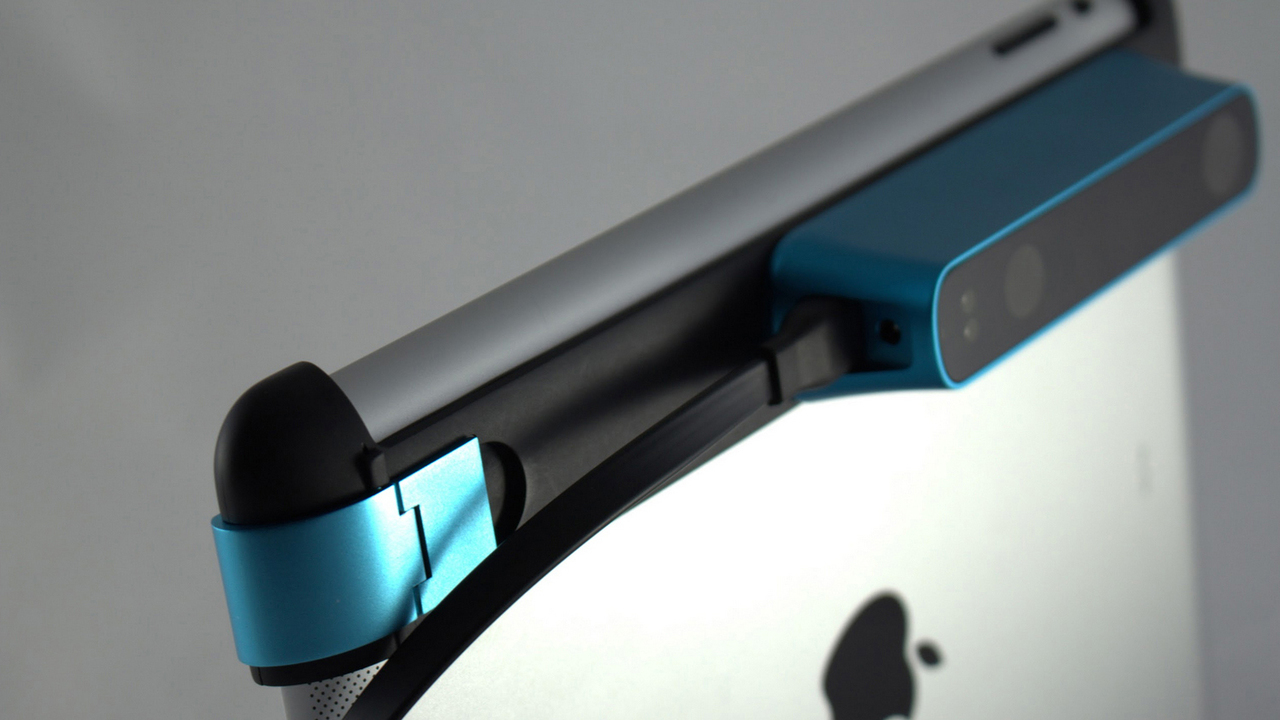
The Structure Sensor is the world’s first 3D sensor for mobile devices. It gives mobile devices a new sense – the ability to not just capture the world as two-dimensional images, but to actually understand it in three dimensions.
The Structure Sensor isn’t a 3D object scanner. It’s a hardware platform that gives developers the ability to easily create applications that take advantage of a 3D sensor on an iOS device for the first time ever. This enables a completely new set of mobile applications, including:
• 3D mapping of indoor spaces for instant measurements and virtual redecoration.
• Augmented reality (AR) games where virtual objects interact precisely with the geometry
of the physical world, including occlusions.
• Body scanning for fitness tracking and virtual clothes fitting.
• Virtual reality games using 3D environments imported from the real world.
• And, finally, 3D object scanning for easy 3D content creation. With the Structure Sensor,
3D scanning no longer requires a dedicated hardware device; rather, it’s simply an app that uses the Structure Sensor’s depth stream as its foundation.
Unlike previous 3D sensors, which were designed to connect to game consoles and computers, the Structure Sensor has been designed from the ground up to go mobile: compact dimensions, mobile-optimized range, no external power source required for operation, and a precision bracket that lets it quickly and securely attach to an Apple iPad with Lightning connector.
The Structure Sensor was launched on Kickstarter in September 2013. The campaign raised nearly $1.3M from over 3500 backers in 45 days. As a result, the Structure Sensor became the 6th most successful Kickstarter technology category project ever.
Soon after the completion of the Kickstarter campaign, the Structure Sensor was named a Popular Science “Best of What’s New” gadget for 2013, and was recognized as a 2014 CES Innovations Award Design & Engineering Honoree.
How it Works
The Structure Sensor uses structured light to capture depth data. Structured light uses a laser projector to cast a precise pattern of thousands of invisible infrared dots onto objects and spaces. It then uses a frequency-matched infrared camera to record how the pattern changes, thereby understanding the geometry of those objects and spaces. As a result, the Structure Sensor can generate a VGA depth stream at 30 frames per second, with each pixel representing an exact distance to a real-world point.
Demo Apps
The Structure Sensor will ship with demo apps so it can be used right out of the box. These demo apps include: Object Scanner for scanning objects in 3D to export to 3D printers and 3D modeling programs; Room Capture for capturing entire rooms as interactive 3D models; and Fetch, an augmented reality game that turns the real world into a game world.
Developers
The Structure Sensor will arrive with the Structure SDK, which lets developers create apps that tap into 3D depth data on an iOS device for the first time. Developers will be able to build their apps in Xcode, and launch them on the Apple App Store. Developers can download sample source code for the demo apps that will ship with the Structure Sensor.
The Structure Sensor has also been designed for hackability. A special USB Hacker Cable lets it connect to any device with a standard USB port, including Android tablets. Open source drivers for Android, Windows, Linux and OS X will be available, as well as CAD specs for easy creation and 3D printing of custom brackets to attach the Structure Sensor to nearly any device.
Performance
• Depth sensing range: 40 centimeters to 3.5 meters
• Frame rate: 30-60 frames per second
• Resolution: 640x480
• Precision: 1% of measured distance (typical)
• Battery life:
• Integratedlithiumpolymerbattery–doesn’tuseiPadbattery o 3-4hoursofactivesensing,1000+hoursstandby
Materials & Design
• Anodized aluminum chassis
• Doublesasathermalcoretomaintainoptimaloperatingtemperature
• Chemically-hardened glass surface for durability and a high-quality depth image
• Compact dimensions: The smallest 3D sensor on the market with room-scanning range
iPad Attachment Bracket
• Available brackets attach the Structure Sensor quickly and securely to most iPads with Lightning connector (iPad 4th generation, iPad Air, iPad mini with Retina display)
• Precision anodized aluminum latch
• Aligns the iPad’s high-res camera with the Structure Sensor to allow apps to seamlessly
combine color and depth